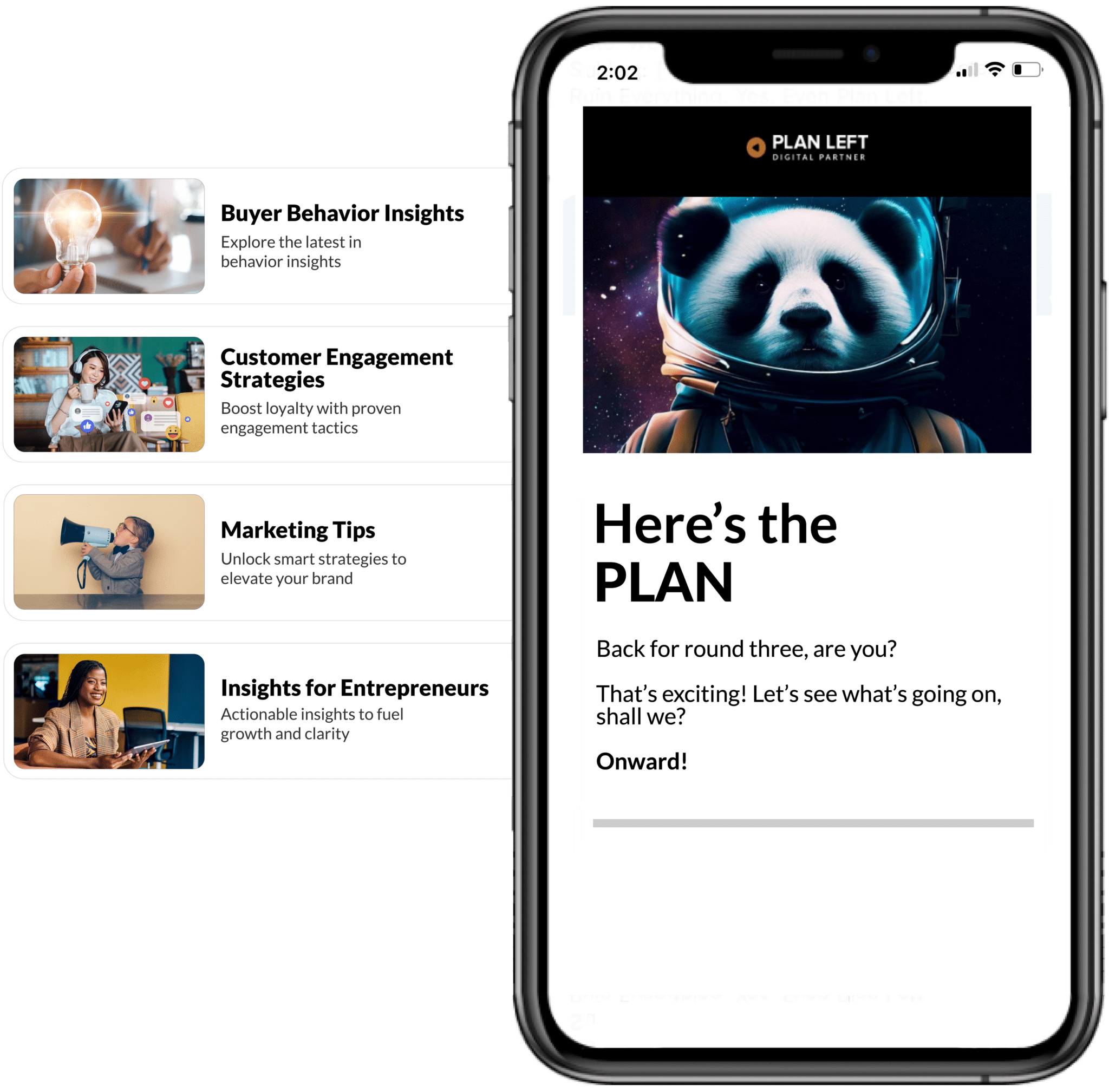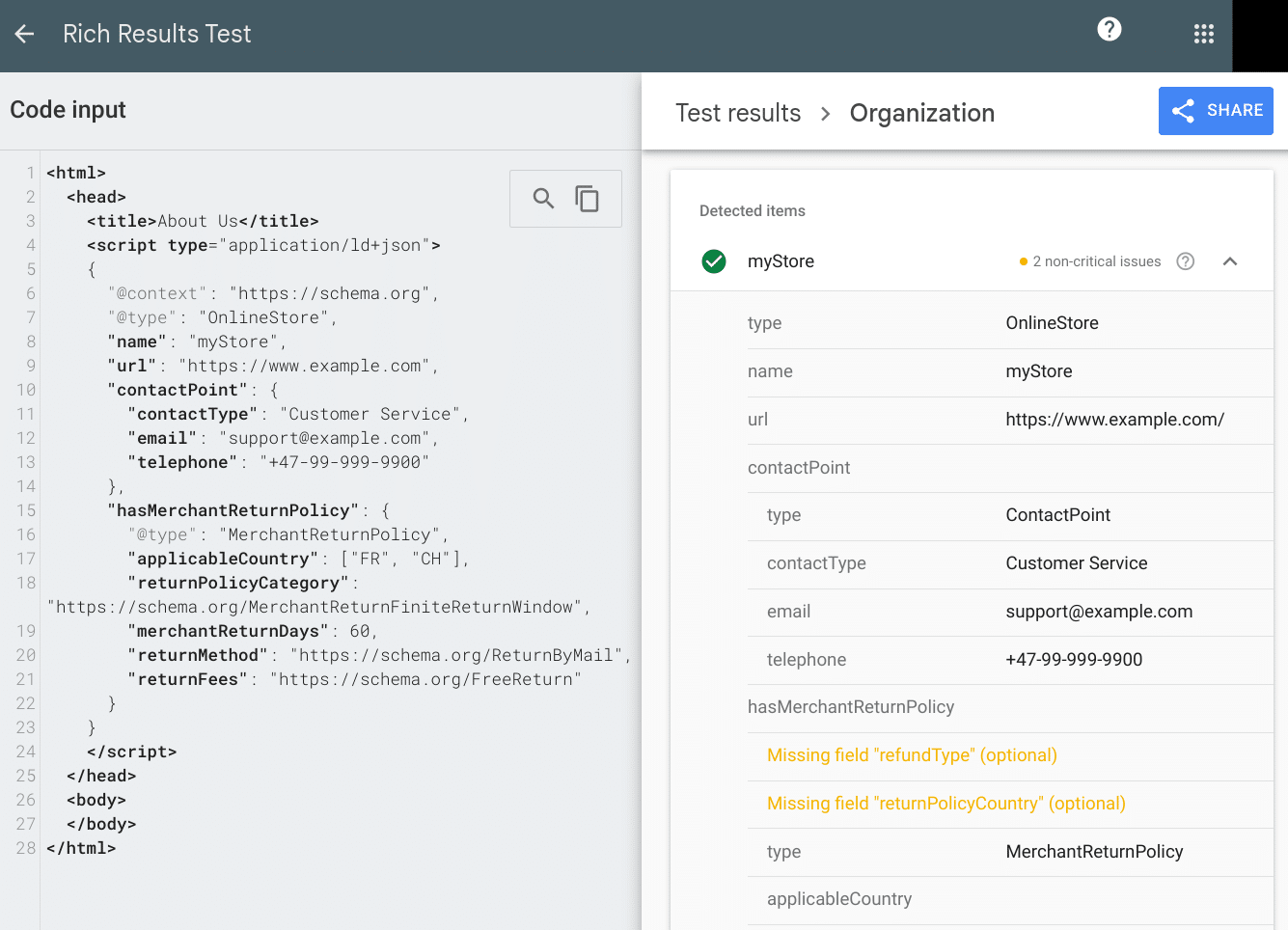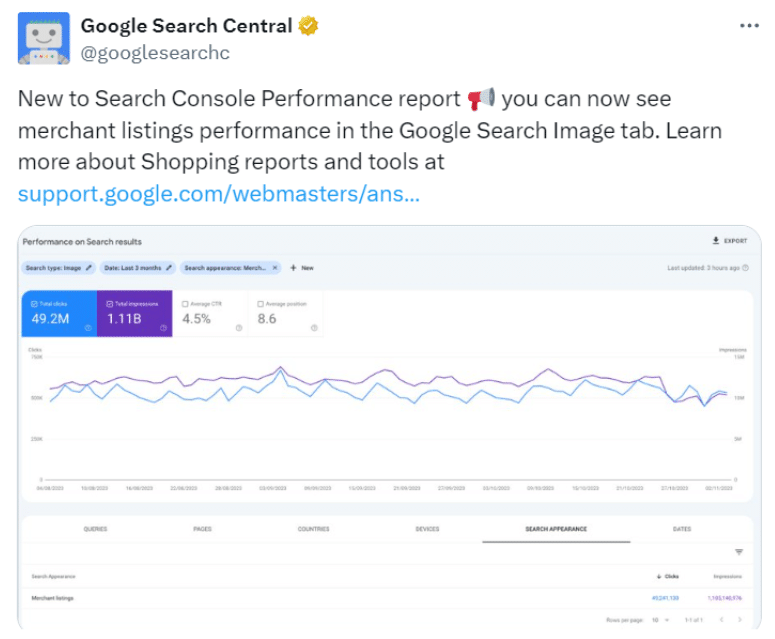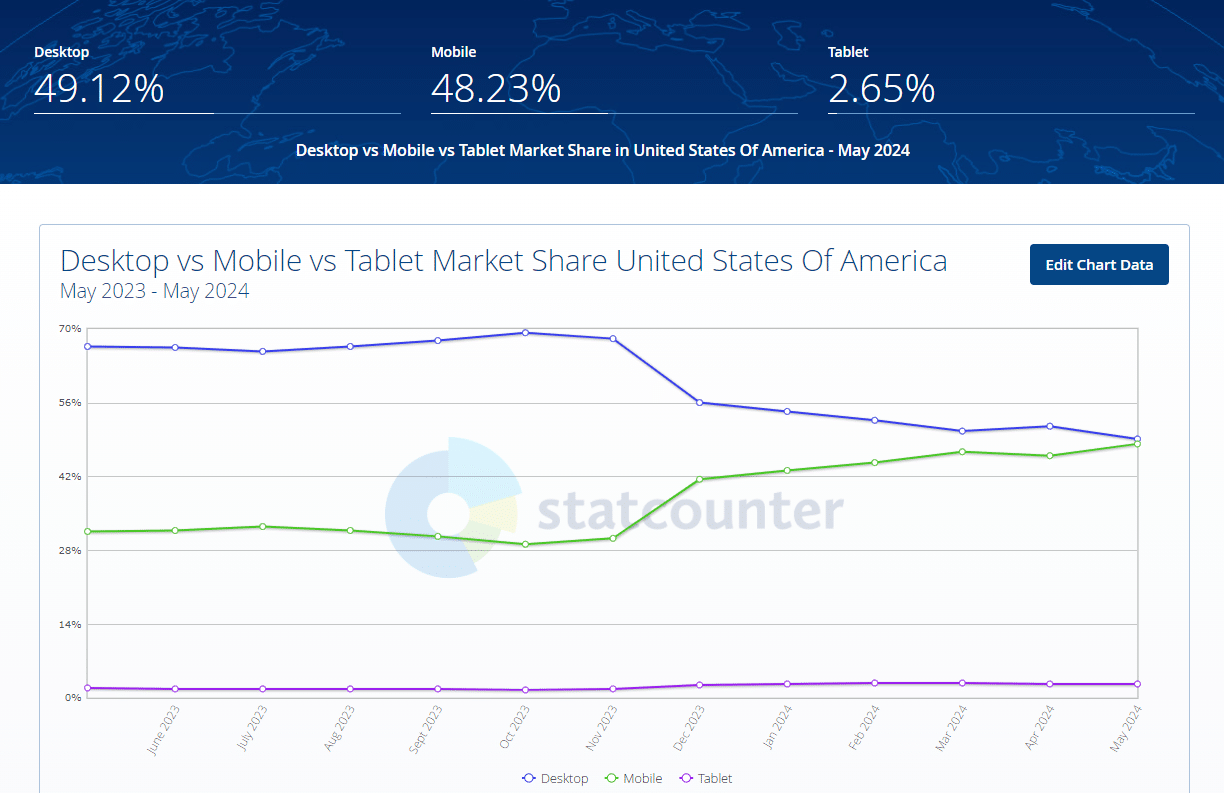
Google updated structured data to include information about return policies and spoke out on the importance of markup, citing a recent case study using ObjectVideo. After last week’s shake-up with the Google document leaks, Google has spoken out on CTR. Is it a ranking factor?
Google Updating Structured Data
A new update from Google supporting organization-level return policies through structured data markup means online and local businesses can now directly include detailed return policy information in search results.
Source: Google Search Central Adding markup support for organization-level return policies
Since eCommerce customers will be able to easily find and understand your return policies without having to dig through websites, this is a great way to enhance user experience.
The Google Search Central blog post walks you through how to implement this structured data and highlights the benefits of:
- Improved visibility in search results
- Potentially higher click-through rates
Importance of Structured Data
If you doubt the necessity of structured data, a recent Google case study reinforces the importance of using it on your website. The study showcased real-world examples of how Vidio, a media streaming marketing platform, significantly benefited from using markup like VideoObject.
By implementing the VideoObject markup, Vidio saw better search visibility, increased traffic, and enhanced user engagement. Structured data helps search engines understand your content better, which can lead to rich snippets and other enhanced search features that attract more users. It’s like giving your website a VIP pass to better search performance, and enhance user experience by letting users know there will be a video.
Merchant Listings Now In Google Search Console
Google Search Console has added a new feature integrating merchant listings into the image performance report that allows you to track the performance of your product images in search results.
Source: Google Search Central X Post
You can see which images are driving traffic, identify opportunities for optimization, make informed decisions to improve image search visibility, and ultimately drive more traffic and sales.
Save Server Resources and Use Robots.txt to Block Crawlers From Action URLs
Google is reminding website owners to use the robots.txt file to block crawlers from accessing certain URLs, specifically those that trigger actions or transactions on the server. These “action URLs” can include links for processes like adding items to a cart, submitting forms, or initiating downloads.
Why Block Crawlers?
The main reason for blocking crawlers from these URLs is to conserve server resources and prevent unintended actions from being triggered by search engine bots. When crawlers access these URLs, they can unnecessarily use server resources and possibly create undesired side effects, like creating duplicate orders or modifying data unintentionally.
Disallowing Crawlers
Using the robots.txt file not only helps optimize server performance but also ensures that search engines do not inadvertently execute actions that only human users should trigger. To block the crawlers, you first determine the URLs you want to block crawlers from and then update your robots.txt file.
As an example, if you wanted to disallow your URL for ‘add to cart,’ your robots.txt file may look something like:
User-agent: *
Disallow: /cart.php?action=addtocart
Or
User-agent: *
Disallow: /addtocart.aspx?
Watercooler Highlights
Users asked if they should stop optimizing for desktop users with upcoming changes to Googlebot Desktop and Google Smartphone crawlers. Search Liaison subtly hints that maybe you shouldn’t trust everything you hear.
Google’s Statement About CTR and HCU
Google has addressed the debate about the role of Click-Through Rate (CTR) in search rankings, clarifying that CTR is not a direct ranking factor. Instead, Google focuses on providing high-quality content and user experience.
The Helpful Content Updates and recent Core and Spam updates all have one goal: to prioritize genuinely useful content for users. The updates reinforced Google’s commitment to rewarding websites offering valuable and relevant information rather than simply attracting clicks. The emphasis has always been on creating helpful, user-focused content to enhance the overall search experience, and that has not changed.
Source: Search Engine Journal
Do Not Stop Optimizing for Desktop
Despite Google’s decision in July to no longer run the desktop crawler and only run the Googlebot Smartphone crawler, Google emphasizes the importance of providing a seamless experience across all platforms.
While mobile-first indexing and mobile optimization are crucial, neglecting desktop users can potentially impact search performance and lead to a less than pleasant experience. Especially considering that desktop (49%) and mobile (48%) users in the US are so close in number. The key is striking a balance and providing a seamless, high-quality experience across all devices and platforms.
Source: StatCounter Desktop vs Mobile vs Tablet Market Share United States Of America
Explore Latest Posts
The Hidden Cost of Marketing Agencies: Why Building In-House Capabilities Matters Marketing agencies solve an immediate problem: you need marketing ... read more
December 23, 2025
How to Know Exactly Which Marketing Activities Drive Results You're investing in marketing. Social media posts go out regularly. Email ... read more
December 18, 2025
The Entrepreneur's Guide to Creating a High-Ticket Flagship Offer Most businesses are built on a foundation of scattered services, multiple ... read more
December 16, 2025
Essential Strategies for Entrepreneurs
Get Actionable Business Insights & Marketing Tips
Our newsletter delivers real-world strategies from entrepreneurs who’ve been exactly where you are.
Sign up now for:
- Actionable growth strategies that work
- Insider tactics for attracting top talent
- Real-world case studies from successful founders
- Emerging tech trends that drive innovation
- Pragmatic marketing approaches for visionary leaders








